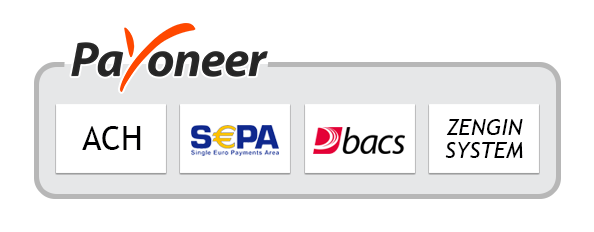Table of Contents
Overview
New York, NY – March 13, 2025 – The Global Wind Turbine Decommissioning Market is set to expand significantly, projecting a growth from USD 2.1 billion in 2024 to around USD 8.6 billion by 2034, with a steady CAGR of 15.2% during the forecast period from 2025 to 2034.
This market encompasses the dismantling, recycling, and disposal of old wind turbines, which is gaining importance due to the growing focus on renewable energy and the lifecycle management of energy resources. Key drivers for this market include technological advancements that enhance efficiency and safety in decommissioning processes and the lowering of the Levelized Cost of Energy (LCOE) due to these innovations.
These advancements facilitate easier regulatory compliance and optimize logistical operations, making the decommissioning process smoother and more cost-effective. Market growth is also spurred by increasing environmental awareness, which drives the demand for sustainable decommissioning practices.

Key Takeaways
- The Global Wind Turbine Decommissioning Market is expected to grow from USD 2.1 billion in 2024 to USD 8.6 billion by 2034, at a CAGR of 15.2%.
- Deconstruction services held a 38.5% market share in 2024 due to the need to dismantle key turbine components.
- Horizontal-axis wind Turbines accounted for a 56.2% market share in decommissioning activities in 2024.
- Blades represent a dominant component in decommissioning, holding a 39.3% market share in 2024 due to their recycling challenges.
- The onshore segment captured a 58.5% market share in 2024, driven by the prevalence of onshore wind farms.
- Independent Power Producers held a 46.5% market share in decommissioning services in 2024.
- Europe is expected to lead the market with a 32.5% share by 2023, driven by regulatory frameworks and a large number of aging turbines.
➤ For a deeper understanding, click on the sample report link: https://market.us/report/wind-turbine-decommissioning-market/request-sample/
Report Scope
| Market Value (2024) | USD 2.1 Billion |
| Forecast Revenue (2034) | USD 8.6 Billion |
| CAGR (2025-2034) | 15.2% |
| Segments Covered | By Service Type (Deconstruction, Recycling, Repair and Maintenance, Logistics Management), By Wind Turbine Type (Horizontal Axis Wind Turbine, Vertical Axis Wind Turbine, Offshore Wind Turbine, Onshore Wind Turbine), By Component (Blades, Nacelle, Tower, Foundation), By Location (Onshore, Offshore), By End User (Independent Power Producers, Government Agencies, Utility Companies) |
| Competitive Landscape | Aggreko Ltd, Apex Clean Energy, Belson Steel Center Scrap Inc., Cadeler A/S, Deltares, DEME NV, Donjon Marine Co., Inc., EnBW Energie Baden-Württemberg AG, Enel Green Power S.p.A., EOS Engineering & Service Co., Ltd., Intertek Group Plc, JACK-UP BARGE, Jansen Recycling Group, M2 Subsea, NIRAS A/S, NIRAS Gruppen A/S, Ocean Surveys, Inc., Oceaneering International, Inc., Principle Power, Inc., Ramboll Group A/S, ReBlade, SgurrEnergy, Wind Decom |
➤ Directly purchase a copy of the report – https://market.us/purchase-report/?report_id=140279
Key Market Segments
- By Service Type
In 2024, Deconstruction emerged as the leading service type in the wind turbine decommissioning market, accounting for over 38.5% of the market share. This dominant position is driven by the growing number of wind turbines reaching the end of their operational lifespans, requiring the disassembly and removal of key components such as towers, nacelles, and rotor blades. - By Wind Turbine Type
In 2024, horizontal-axis wind Turbines (HAWTs) held a leading position in the wind turbine decommissioning market, capturing more than 56.2% of the market share by turbine type. This dominance stems from HAWTs being the most widely adopted technology in the global wind energy industry, prevalent in both onshore and offshore installations. - By Component
In 2024, Blades dominated the wind turbine decommissioning market by component, accounting for more than 39.3% of the market share. This significant share is driven by the large size of turbine blades and the complexities associated with their removal and disposal. - By Location
In 2024, the onshore segment led the wind turbine decommissioning market, capturing more than 58.5% of the total market share. This dominance is attributed to the large number of onshore wind farms globally that are reaching the end of their operational life cycles. Onshore wind turbines are more common than offshore turbines, particularly in regions like North America, Europe, and Asia-Pacific, where land-based wind energy infrastructure has been extensively developed. - By End User
In 2024, Independent Power Producers (IPPs) held a dominant position in the wind turbine decommissioning market, accounting for more than 46.5% of the market share. IPPs are key players in the wind energy sector, managing a substantial portion of the global installed wind capacity. As their wind turbine assets near the end of their life cycles, decommissioning services are essential to ensure compliance with environmental regulations and to address risks associated with aging infrastructure.
Regional Analysis
- Europe is set to lead the global wind turbine decommissioning market, holding an estimated 32.5% share, valued at USD 0.6 billion in 2023. This dominance is fueled by the region’s strong dedication to renewable energy and the presence of numerous aging wind turbines. Over the past 20 years, Europe has been at the forefront of wind energy adoption, with countries such as Germany, the UK, Spain, and Denmark boasting some of the largest installed wind capacities worldwide.
- The trend of decommissioning in Europe is shaped by regulatory frameworks and sustainability objectives established by the European Union. The EU’s Green Deal, which aims to reduce carbon emissions, has spurred investments in the circular economy, promoting the recycling and repurposing of wind turbine components, particularly blades, which have historically been difficult to recycle.
- Germany is anticipated to be a major hub for decommissioning within Europe, driven by its ambitious wind energy policies and a significant number of aging turbines. By 2030, it is projected that more than 10,000 turbines across Europe will reach the end of their life cycle each year, further increasing the demand for decommissioning services.
Top Use Cases
- Repowering Projects: When wind turbines reach the end of their operational life, they are often replaced with newer, more efficient models. This process, known as repowering, involves decommissioning older turbines, which may include dismantling them and recycling usable materials like steel and copper.
- Land Restoration: Decommissioning also includes restoring the land to its previous condition. This might involve removing turbine foundations and infrastructure, then filling in holes and replanting vegetation to ensure the area returns to its natural state or is ready for alternative use.
- Recycling and Reusing: Many components of decommissioned turbines, such as metals from the generator and tower, are recyclable. Turbine blades, although more challenging to recycle due to their composite materials, are increasingly being repurposed for other uses, such as construction materials or even art installations.
- Educational and Research Opportunities: Decommissioned wind farms sometimes serve as sites for research on decommissioning processes and technologies. They provide real-world environments to study how best to dismantle and recycle materials and to develop more sustainable practices.
- Community and Economic Benefits: Even after decommissioning, wind farms can continue to benefit local communities. Materials salvaged from the site can be sold, providing financial returns, and the cleared land can be used for new commercial or community projects, contributing to local economies.
Recent Developments
1. Aggreko Ltd
- Aggreko appointed Alan Dunne as Managing Director for the UK and Ireland to spearhead growth in energy transition solutions. This includes investments in technologies and services to support businesses balancing commercial goals with net-zero targets, which indirectly supports wind turbine decommissioning by providing flexible energy solutions during decommissioning projects.
2. Apex Clean Energy
- Apex Clean Energy completed the 200 MW Big Elm Solar project in Texas and is developing the 208 MW Bowman Wind project in North Dakota. While these are new projects, Apex’s expertise in renewable energy development can be leveraged for decommissioning planning.
3. Belson Steel Center Scrap Inc.
- Belson Steel Center Scrap Inc. is recognized for its role in scrap metal recycling, which is critical for processing materials from decommissioned wind turbines, such as steel and other metals.
4. Cadeler A/S
- Cadeler completed the installation of wind turbines at Borkum Riffgrund 3 (913 MW) and Gode Wind 3, deploying the upgraded Wind Osprey vessel with a 1,600-ton crane. This expertise in installation can be applied to decommissioning.
- Completed the Moray West offshore wind farm, installing 60 Siemens Gamesa 14.7MW turbines, showcasing their capability to handle large-scale wind projects.
5. Deltares
- Deltares is recognized for its research and consultancy services in wind turbine decommissioning, focusing on environmental impact assessments and sustainable decommissioning practices.
Conclusion
The Wind Turbine Decommissioning Market continues to evolve; it stands at a critical point where growth and challenges intersect. Projected to expand significantly, this sector is driven by the increasing number of aging wind turbines and the essential need for their responsible disposal. The market is buoyed by advancements in recycling technologies and the development of more efficient decommissioning methods, yet it faces challenges such as high costs and the complexities of offshore decommissioning.
Discuss Your Needs With Our Analyst
Please share your requirements with more details so our analyst can check if they can solve your problem(s)





